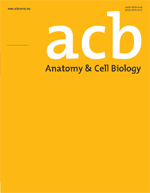- 영문명
- Genetic heterogeneity of liver cancer stem cells
- 발행기관
- 대한해부학회
- 저자명
- Minjeong Kim Kwang-Woo Jo Hyojin Kim Myoung-Eun Han Sae-Ock Oh
- 간행물 정보
- 『Anatomy and Cell Biology』Vol.56(1), 94~108쪽, 전체 15쪽
- 주제분류
- 의약학 > 의학일반
- 파일형태
- 발행일자
- 2023.03.31

국문 초록
영문 초록
Cancer cell heterogeneity is a serious problem in the control of tumor progression because it can cause chemoresistance and metastasis. Heterogeneity can be generated by various mechanisms, including genetic evolution of cancer cells, cancer stem cells (CSCs), and niche heterogeneity. Because the genetic heterogeneity of CSCs has been poorly characterized, the genetic mutation status of CSCs was examined using Exome-Seq and RNA-Seq data of liver cancer. Here we show that different surface markers for liver cancer stem cells (LCSCs) showed a unique propensity for genetic mutations. Cluster of differentiation 133 (CD133)-positive cells showed frequent mutations in the IRF2, BAP1, and ERBB3 genes. However, leucine-rich repeat-containing G protein-coupled receptor 5-positive cells showed frequent mutations in the CTNNB1, RELN, and ROBO1 genes. In addition, some genetic mutations were frequently observed irrespective of the surface markers for LCSCs. BAP1 mutations was frequently observed in CD133-, CD24-, CD13-, CD90-, epithelial cell adhesion molecule-, or keratin 19-positive LCSCs. ASXL2, ERBB3, IRF2, TLX3, CPS1, and NFATC2 mutations were observed in more than three types of LCSCs, suggesting that common mechanisms for the development of these LCSCs. The present study provides genetic heterogeneity depending on the surface markers for LCSCs. The genetic heterogeneity of LCSCs should be considered in the development of LCSC-targeting therapeutics.
목차
Introduction
Materials and Methods
Results and Discussion
ORCID
Author Contributions
Conflicts of Interest
Acknowledgements
References
해당간행물 수록 논문
참고문헌
최근 이용한 논문
교보eBook 첫 방문을 환영 합니다!

신규가입 혜택 지급이 완료 되었습니다.
바로 사용 가능한 교보e캐시 1,000원 (유효기간 7일)
지금 바로 교보eBook의 다양한 콘텐츠를 이용해 보세요!




